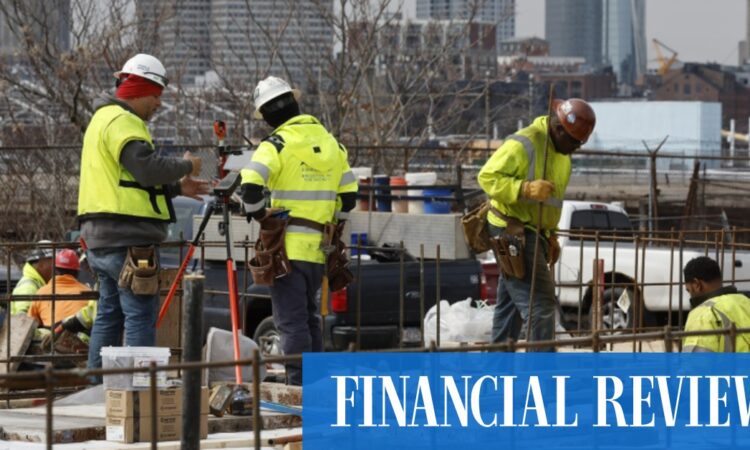
Deutsche’s Mr Ruskin highlighted the rosier economic picture in Europe, and speculation that Kazuo Ueda, the new governor of the Bank of Japan, might ease its long reliance on ultra-easy monetary policy amid upward pressures on interest rates, which are key drivers of currency moves.
The European Central Bank is widely expected to raise interest rates by a further half-point to 4 per cent by June as growth and tight labour markets stoke fears that the battle against inflation is not fully won, despite softer headline price rises.
And although Mr Ueda has so far stuck with his predecessor’s strategy, that has failed to dent speculation that Japan will look to unwind gradually the BoJ’s policy of controlling its yield curve to help keep interest rates low.
In the UK, markets are almost completely pricing in a half-point rise by the Bank of England by September.
In contrast, after a widely anticipated quarter-point rise at its May meeting, markets expect the Fed to soon start cutting interest rates if growing expectations of a US recession are borne out.
The recent US banking crisis has also weighed heavily on the dollar.
Following the collapse of three banks in a single week in March, a regular survey by the Dallas Federal Reserve showed a sharp drop in bank lending volumes across the board. Several sets of job data have also pointed to softer labour markets, although the most widely watched, the monthly payrolls report, has not supported that yet.
“The shock to US banks … reinforces the idea that the US could go into a recession before other major economies” which is negative for the dollar, said Ebrahim Rahbari, chief currency strategist at Citigroup.
Reducing excess liquidity
Meanwhile, the Fed’s support for the banking system, including a new lending facility, has partially reversed its efforts to shrink its balance sheet. Known as quantitative tightening, the reductions were another way of reducing excess liquidity in the system, but the Fed’s need to funnel cash to wobbly regional banks has undermined those efforts.
“Fundamentally, exchange rates are an extension of monetary policy – [the] dollar had a great run as the Fed wanted to tighten policy,” said Chris Turner, head of FX strategy at ING. “That’s all changed at the start of this year with the signs of a slowdown which has been exacerbated by the banking crisis.”
However, funds’ bets on further dollar weakness could be caught out if investors suddenly rush for havens in the event of a crisis.
Current conditions weighing on the dollar “could evaporate fairly rapidly if the markets sense another weak link in the financial sector or global economy as the world adjusts to higher rates”, said Jane Foley, head of foreign exchange strategy at Rabobank. “[The] dollar could move quite a lot higher without much notice.”
And, as has been the case this year, any path to further dollar weakness is likely to be bumpy as investors consider how far central banks will need to tighten monetary policy to control inflation.
“If we look back this year, in January it was like a Goldilocks scenario as headline inflation came down. Then, in March, because of the banking turmoil, the market weakened,” said Athanasios Vamvakidis head of G10 foreign exchange strategy at Bank of America.
“It won’t be a straight line. It’s going to be a rollercoaster ride,” he said.
Financial Times



